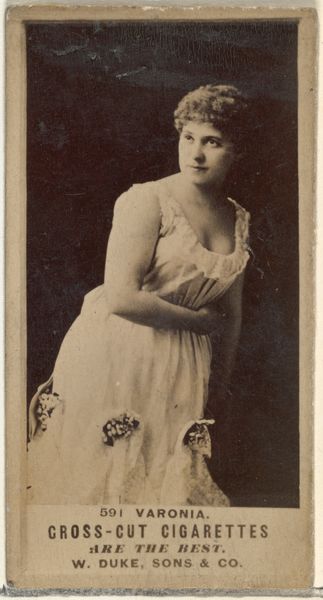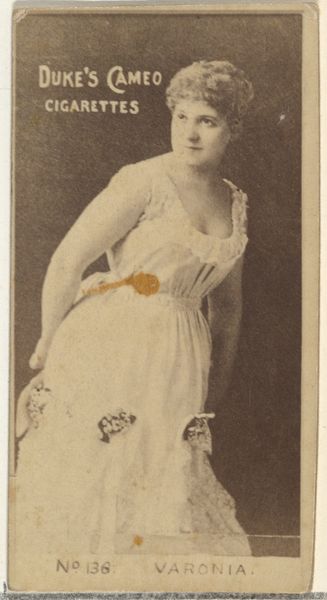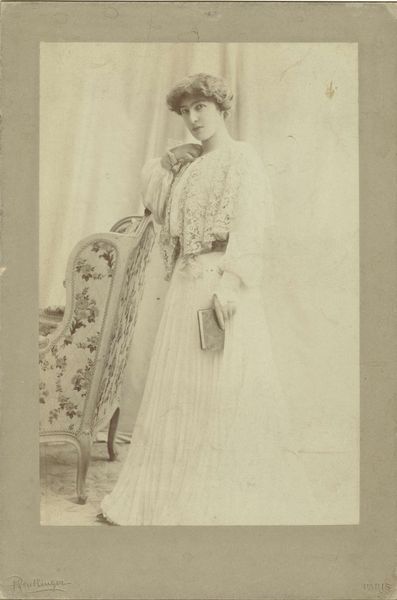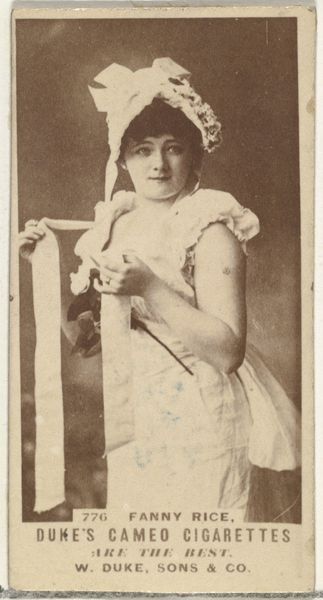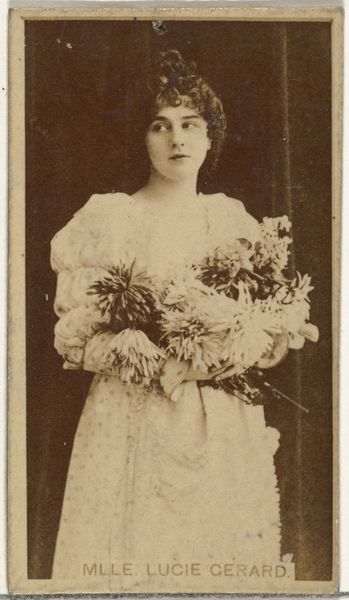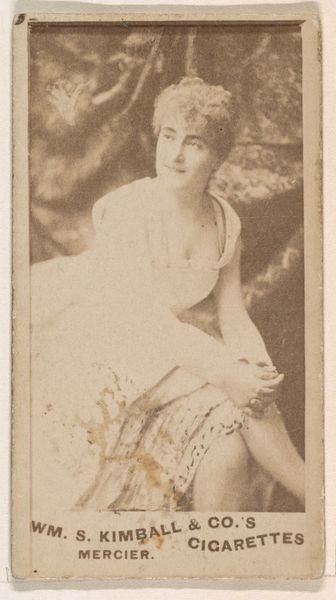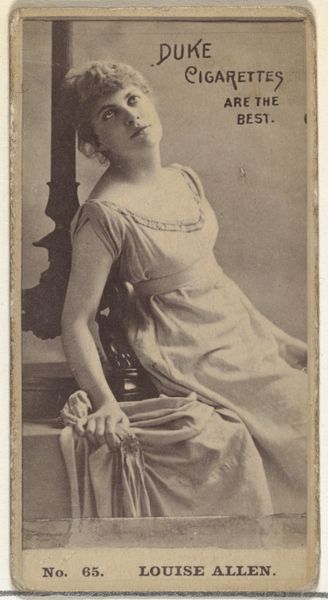
photography
#
photography
#
historical photography
#
historical fashion
#
symbolism
Dimensions: height 140 mm, width 88 mm
Copyright: Rijks Museum: Open Domain
Curator: It feels steeped in reverie, doesn’t it? Ethereal, like a dream of a bygone era. The sepia tones give it that removed, almost mythic quality. Editor: Indeed. The photograph, created around 1902 by Léopold Reutlinger, depicts the dancer Cléo de Mérode. She was a celebrity, adored and also subjected to immense scrutiny and gossip. It’s intriguing to think about how such portraits shaped her image. Curator: The accessories around her head immediately bring to mind associations of wreaths, Greek goddesses, and other ritualistic vestments for feminine figures, but flattened for daily life. Her face appears smooth and calm despite that wild energy I get from looking at the flowers in the lower corner, and what appear to be decorative appliques sewn all over her clothes. Editor: Precisely. De Mérode actively cultivated her image to transcend conventional beauty standards. This aesthetic was rooted in the artistic currents of Symbolism. I am seeing many visual cues associated with an air of untouchable refinement, as if placing her beyond easy reach. Her status as an international star becomes coded into these photographic compositions. This photograph is not just a likeness; it's an assertion of power. Curator: The costume plays a role too. In fin-de-siècle Paris, performance spaces were centers for female innovation. We can interpret this choice of attire as the blurring of lines between de Mérode as performer and as an arbiter of taste. It allows us to re-imagine our understandings of class and performativity and the expectations we still bring to portraits of female subjects today. Editor: Examining Reutlinger’s photography allows us to reframe how we consume historical depictions of women. It forces us to confront the dynamics of spectacle, expectation, and imposed identity, but I find a persistent tension when trying to understand what was controlled or authentic in Cléo de Mérode's visual narrative. Curator: Absolutely, she was both the subject and a creator of meaning. And I leave today thinking about this push and pull between de Mérode’s power and the lens.
Comments
No comments
Be the first to comment and join the conversation on the ultimate creative platform.
